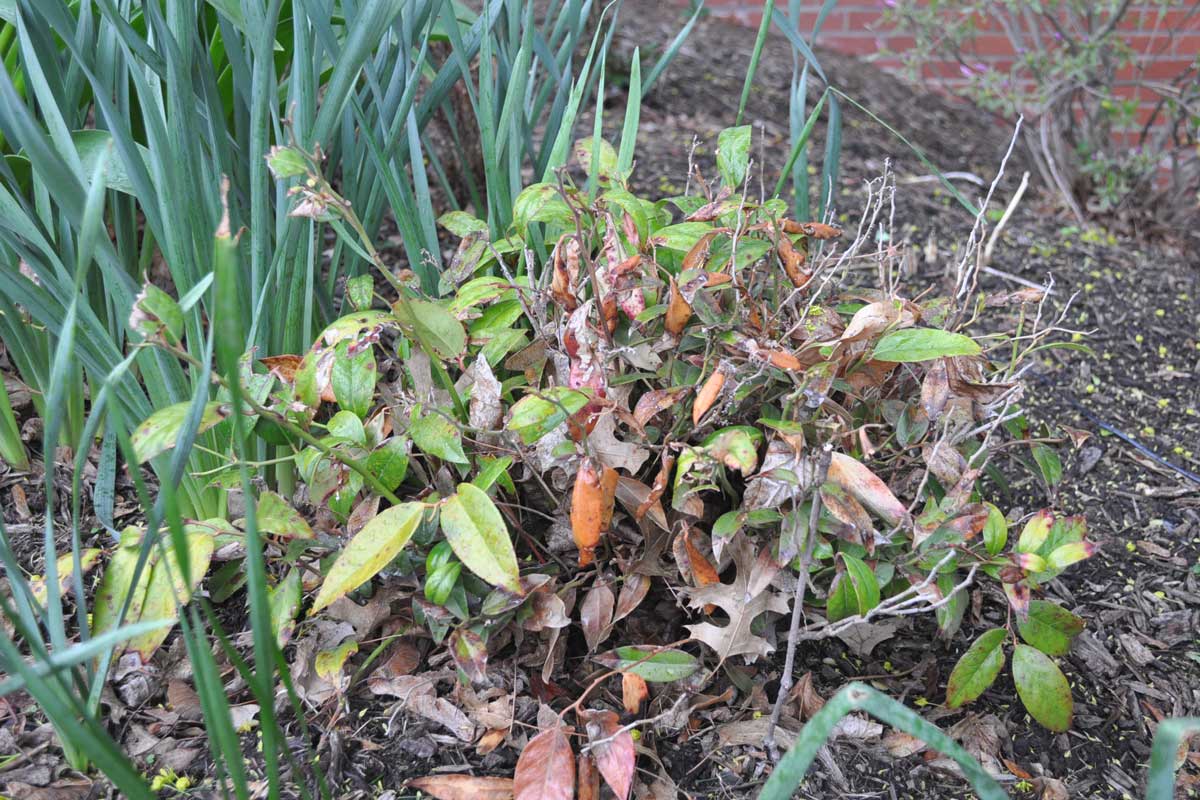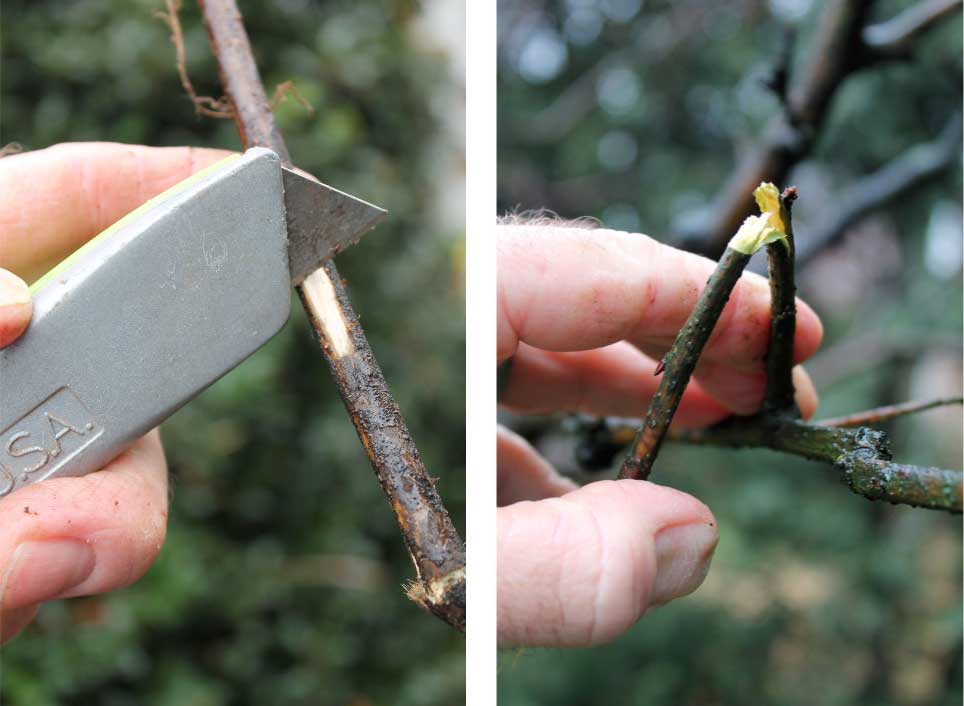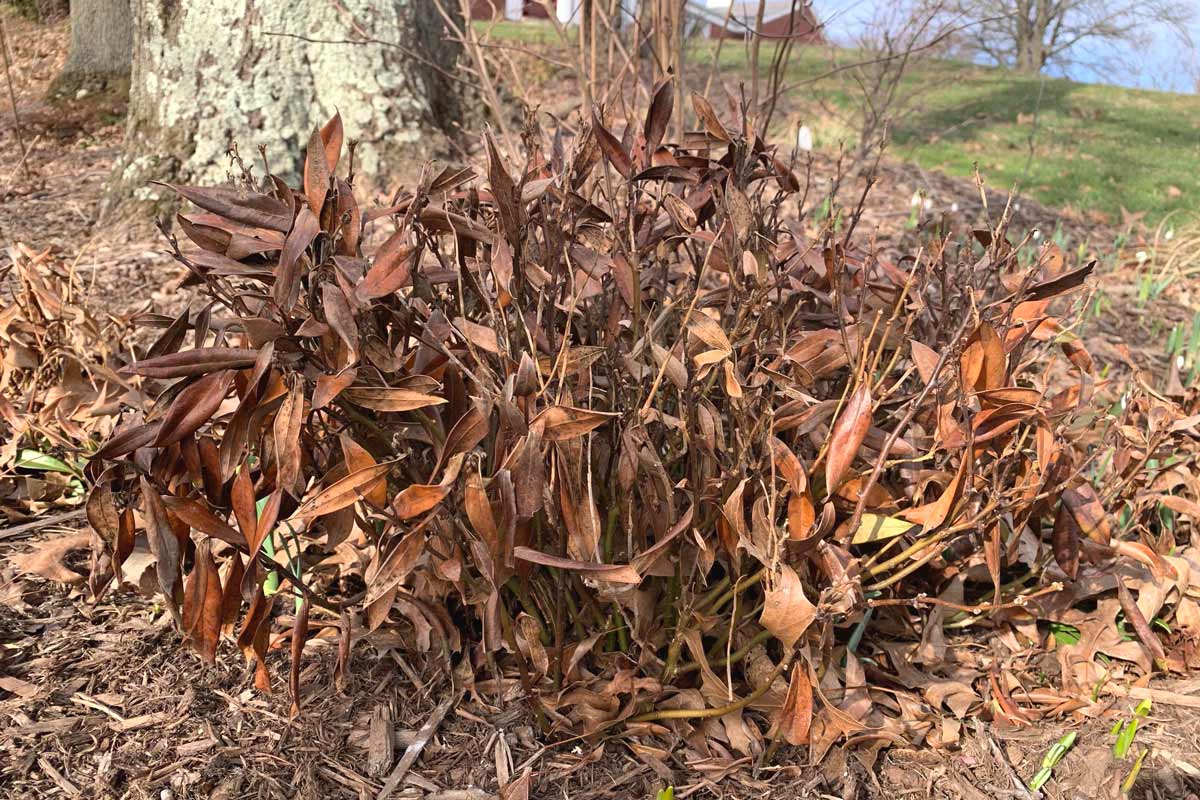The Three Best Things You Can Do to Head Off Winter Plant Damage
Cold temperatures and the drying winds of winter can take a toll on plants. Here's how to minimize damage with three key precautions in fall.

Cold winter wind has browned the foliage of this leucothoe – a condition known as “windburn.” George Weigel
Late March through mid-April is a time when most landscape plants emerge from their winter siestas to grow new shoots and leaves.
Not all plants come back to life at the same time, though. That’s important to know before you dig up a living but still “sleeping” plant, assuming it’s dead since most other plants are growing.
Some plants respond much sooner than others to the lengthening days and warming temperatures of early spring.
Witch hazel, forsythia, winter jasmine, spicebush, star magnolia and Cornelian cherry dogwood, for example, are some of the earliest woody plants to spring back to life. These sometimes begin flowering even while it’s still winter.
Bulbs such as winter aconite, snowdrops, and crocuses, and the deer-resistant shade perennial helleborus also bloom while it’s still winter.

The scrape test, left, and the bend test, right, are two ways to determine if a branch is dead or alive. George Weigel
One good antidote is to get to know plant habits well enough to determine which plants in your yard are naturally late starters.
Second, if you’re in doubt, wait a few more weeks until mid or even late spring to remove or prune what appears to be dead wood.
Even when winter damage has occurred, it’s possible that only the branch tips have died. Given a few weeks of warmth, buds often emerge from the inner or lower parts of the plant.
In some cases, new shoots emerge from the base of a plant when winter cold has killed all of the top growth.
It’s better to give those plants every possible chance to rebound before getting out the shovel. You can always replant in summer or beyond once you know for sure that a plant is a goner.
In the meantime, two tests offer dead-or-alive clues.
One is the bend test. Try bending a few branches and see whether they give or whether the branches snap under pressure.
Branches with live, green wood will be much more pliable than dead wood. Dead wood turns brittle and snaps more readily.
The other test is the scrape test. Use a blade or a fingernail to scrape a little bark off of a few branches.
If you see green underneath, the branch still has life. If it’s brown underneath, at least that part of the plant is dead. Scrape wood lower or more inside the plant as a double-check if you’re seeing brown higher up and farther out.
Hydrangeas are particularly tricky. Seemingly dead branch tips can push new buds even weeks after other parts have begun growing.

This evergreen sweetbox might look dead after an unusually cold winter, but there’s a good chance it’ll sprout new growth. George Weigel
Super-cold temperatures are enough to kill plants whose genetics aren’t adapted to varying levels of low temperatures. Even a night or two of cold that’s out of a given plant’s range is enough to kill a borderline-hardy plant – roots and all.
The way to prevent that is to stick with plants suited to your climate… or at least site borderline-hardy plants in your warmest spots in the yard, such as along a west-facing brick wall or in a wind-protected courtyard.
Protecting plants with burlap shields or surrounding them with leaf-filled burlap cylinders is another option that gives a few degrees extra winter protection.
In other cases, though, cold nights are just enough to kill some (or all) of a plant’s top growth or brown the foliage of needled or broadleaf evergreens (a condition known as “winterburn”).
In those scenarios – when the soil-insulated, underground roots are unharmed – plants often go on to grow fresh foliage and/or push up new shoots from the ground.
Plants usually just drop the damaged foliage and recover without any help from the gardener, other than some possible “neatening” to remove dead tips or branches once you see for sure what’s alive and what’s not.
In still other cases, winter cold is enough to kill leaf, fruit, or flower buds but not the branches themselves.
That’s a particular problem in erratic springs that start out unusually warm and then nosedive in temperature, killing the buds and causing fewer or no fruits and flowers that season.
Again, the plants are fine and usually re-leaf and go on to produce new flowers and fruits if the weather is more stable the following year.
If possible, covering plants with floating row cover or a similar light-weight fabric can be enough to help nurse opening buds through an unusually cold night or two.